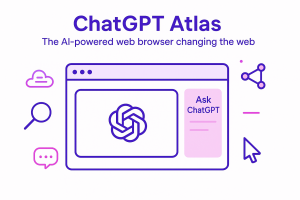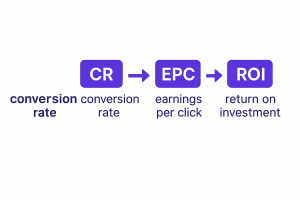Affiliate Dragons develops entertainment and educational portals with the mVAS (mobile Value-Added Services) monetization model, which makes subscription registration as simple and convenient as possible. Unlike classic subscriptions with registration, card entry and complicated payment processes, mVAS allows you to activate content in one click, charging directly from your mobile account or operator’s balance. We closely follow digital content market trends, analyzing how user preferences are changing and which subscription models work most effectively.
What’s different in 2024?
In 2024, the market faces a new reality: users have become more selective, reducing the number of subscriptions and choosing only the most valuable offers. In response, platforms have begun to introduce new monetization formats, including hybrid subscriptions with ads, bundled solutions, and mVAS services that extend standard subscription models with mobile benefits. For example, access to exclusive content can now include connection bonuses, cloud storage or premium app features.
What trends are shaping the subscription market in 2024? What strategies are working best in the entertainment and online education industry? We have prepared a detailed analytical review, in which we analyze key trends, compare the business models of market leaders and find out what content users are willing to pay for most often.
Platforms with paid digital content – from video services to online learning – are developing rapidly. In 2024, users were actively subscribing both for entertainment (movies, TV series, music, games) and education (online courses, learning apps). At the same time, the market faced new trends: competition for exclusive content intensified, hybrid monetization models emerged, and audiences became more discerning about the number and value of subscriptions. In this report, we analyze the key trends in paid entertainment and educational content in 2024, examine subscription business models, find out what content people are most willing to pay for, and compare the leading platforms by audience, pricing, and exclusivity.
Key paid content trends in 2024
🔹Entertainment content (Streaming and digital media): 2024 confirmed that the subscription model is firmly entrenched in the entertainment industry. The average viewer in the U.S. uses about five streaming services at a time , but rising prices and a glut of subscriptions have caused “subscription fatigue.” Some 72% of users believe they are paying too much, and about a third have already reduced their subscriptions or plan to do so. In response, platforms have started to offer more bundled solutions: large media companies are consolidating services (e.g., combining HBO Max with Discovery into a single platform or Disney+-Hulu-ESPN+ bundle) to provide more value for one price. Also gaining popularity are “super-bundles” – single subscriptions that include movies, TV series, sports and other media, simplifying the user’s life . In parallel, many services have launched cheaper tariffs with advertising. In 2024, almost all leading platforms (Netflix, Disney+, Hulu, Peacock, etc.) have introduced advertising plans to attract price-sensitive viewers . For example, more than 55% of new Netflix subscribers in countries with an affordable ad-supported plan opted for an ad-supported plan .
Streaming services continue to grow in popularity, but competition is forcing platforms to offer new models, from bundled subscriptions to ad-supported plans. Users often subscribe for specific shows and then cancel, intensifying the battle for exclusive content .
Another notable trend is the fight against account unfriending. To offset rising content costs, Netflix and other giants have begun limiting the free use of a single subscription to multiple people.
Instead, they offer paid options to add “extra members” – Netflix, for example, has introduced a fee of about $6-8 per extra user. Content remains a major magnet for subscribers: more than half of viewers signed up for a new subscription in 2024 to watch a specific hit series or exclusive episode (e.g., an acclaimed season of a popular show), and then 72% of them canceled after watching the anticipated content . This underscores the importance of original projects – platforms are investing billions to produce their own series and movies. For example, the record influx of Netflix subscribers at the end of 2024 is partly due to the success of originals: the second season of “The Squid Game” and other exclusives attracted millions of viewers . Streaming is also actively exploring sports content. In 2024, online platforms spent at least $9.8 billion to buy the rights to broadcast sporting events – 15% more than a year earlier . Exclusive broadcasts of major tournaments (soccer, Olympics, etc.) have become a strong argument for subscription: according to surveys, 30% of consumers are ready to buy a streaming service just for the sake of an upcoming sports broadcast (for example, the Olympic Games) . At the same time, 75% of viewers recognize that streaming services have actually replaced cable TV – the industry has finally shifted to online.
🔹Educational content (online learning): In the EdTech sector, 2024 is marked by continued audience growth and advancements in personalization technologies. The global online education market continues to grow at double-digit rates and is projected to exceed $460 billion by 2026 . Short learning formats have become particularly popular. Microlearning – short 5-15 minute lessons instead of hour-long lectures – has become a standard: today’s students appreciate the opportunity to quickly gain knowledge in a convenient format. At the same time, gamification of learning has become an almost mandatory feature of platforms: interactive tasks, game scores, and competitions between students. Such mechanics noticeably increase engagement and motivation to complete the course.
Another key trend is the mass adoption of artificial intelligence. AI is being used to make personalized course recommendations, tailor content to the student’s level, and even create virtual assistants for practice. In 2024, a surge of interest in AI courses was seen on all major platforms: for example, on Coursera, demand for Generative AI training broke records and was higher than for any other skill in the platform’s history . The top 10 most popular online courses of the year included several programs on AI and data analytics, while a couple of years ago, courses on basic digital skills were leading . Nevertheless, there is still a steady interest in classical areas – among the most popular educational content of 2024 were financial literacy and language learning, which remain “eternal hits” of online learning. The growth of professionally-oriented learning is worth noting separately. Users are increasingly choosing online programs to acquire specific skills for a particular profession (Project Management, Digital Marketing, UX/UI, etc.), often with a certificate. Companies are supporting the trend: corporate clients are buying subscriptions en masse to train their employees. It is expected that by 2025-2026, many firms will switch to predominantly online formats for staff development. Platforms are responding to the demand – partnership programs with universities, online degrees, and closed communities for students and alumni are emerging. Social is becoming important: successful education services integrate chat rooms, forums and interest groups so that students can connect and learn in a community of like-minded people (this increases retention and the value of learning) .
Subscription business models and monetization
Models in the entertainment industry: Most entertainment platforms use the SVOD (Subscription Video on Demand) model – unlimited access to a library of video/audio for a fixed monthly fee. In 2024, this model has evolved: hybrid monetization options have emerged. Almost all major video services now offer two-tiered plans: a standard subscription without advertising and a cheaper one with commercial breaks (AVOD+SVOD model). For example, Netflix first launched a plan with ads in 2023, Disney+ and Hulu have also introduced ads in cheap plans . The goal is to reach both audiences: those who are willing to pay more for ad-free content and those who prefer to save money. Price increases have become commonplace – in 2024, Netflix and other services have increased subscription rates several times to offset the cost of content . At the same time, streamers are trying to justify the value of the subscription: they release exclusive premieres bypassing movie distribution, offer UHD-quality, add new types of content (for example, Netflix included mobile games in the subscription at no extra charge).
🔹In addition to video, audio content subscriptions are gaining momentum. Services like Spotify and Apple Music monetize music using a similar model – for ~$10 per month a user gets access to millions of tracks without ads. As a result, the audience of music streaming is huge (for example, Spotify Premium has crossed the mark of 263 million paying users worldwide, which is even more than Netflix). Similar models are being applied in the podcast and audiobook sector: Amazon’s Audible offers monthly credits for audiobooks on a subscription basis, and some podcasts have become exclusive to paying users. Game subscriptions have also gained traction: Microsoft’s Xbox Game Pass service has amassed some 34 million subscribers by 2024, offering a library of video games for a fixed fee. These examples show that the subscription model is universal across content types, from video and music to interactive entertainment.
🔹Monetization in the entertainment segment also includes affiliate bundles and operator agreements. Amazon Prime Video often comes bundled with an overall Amazon Prime subscription (delivery + music + video), effectively spreading the cost of content across different services. Mobile carriers and providers often subsidize subscriptions for customers (e.g., a year of free Apple TV+ with the purchase of a device or including Netflix in a mobile data plan). Exclusive content has become a critical monetization lever: platforms spend significant budgets to create their own series/movies, knowing that a unique hit will attract a new wave of subscribers and retain current ones. Also, some companies license their content to external platforms after an exclusive window – this brings additional revenue (for example, studios can sell the rights to show old seasons of a series to other services when the novelties have already attracted a core audience on the original platform).
🔥An interesting model is the direct monetization of fan content through platforms like Patreon. Here, creators themselves set subscription fees for access to their exclusive content (videos, artwork, podcasts, educational materials). Users actually subscribe to a specific creator. In 2024, the creator economy continued to grow: such platforms have helped thousands of independent authors earn hundreds of millions of dollars in total. Patreon, for example, offers flexible subscription levels and connects audiences directly with creators, bypassing large studios. Such decentralization is especially noticeable in niche entertainment communities (fans of games, comics, individual artists), as well as among educational enthusiasts (coaches, experts who teach for a fee to small communities).
🔹Models in online education: Paid online learning historically started with one-off course sales – the user pays for a specific course and gets access to it. In 2024, the subscription format for educational content is increasingly common. Many platforms offer an “all-you-can-learn” model: for a fixed monthly or annual fee, a student gets access to the entire library of courses. An example is Skillshare, where $14 per month gives unlimited access to thousands of lessons on design, photography, marketing, etc.
Similarly, MasterClass sells an annual subscription ($180/year) to all celebrity master classes. The subscription model benefits from the catalog effect (a user can take multiple courses without paying for each one separately) and the platform’s recurring revenue. At the same time, the TVoD (Transactional Video on Demand) model for education remains: on marketplaces like Udemy, courses continue to be sold by the piece (average price $10-50 with discounts). This appeals to those who only want to pay for a specific skill. Interestingly, some major MOOC platforms combine both approaches. Coursera has free access to listen to lectures, pay for certificates individually, and a Coursera Plus subscription (~$59/month) for unlimited multiple certificate courses. This tiered monetization (freemium + subscription) allows them to reach a wide audience, from those who learn for free to those who are willing to pay for achievement design and advanced features.
Monetization in EdTech is also increasingly based on B2B and B2G segments. The largest platforms sell corporate packages: Udemy Business, for example, offers per-seat access to its library for companies, while Coursera for Business allows employees to learn on the platform at corporate expense. In 2024, Udemy has grown to 14,000+ enterprise customers and brought annual business revenue for companies to $517 million . This shows that much of the monetization is not coming directly from private students, but through organizations investing in training their teams. In addition, there are partnership programs with universities, when online platforms receive a share from the sale of full-fledged online degrees (MBA, master’s degrees, etc.).
There are revenue sharing models for authors of educational content: on marketplaces the course creator receives a percentage of sales (for example, ~50% on Udemy), on subscription services – a share of the fund, proportional to engagement (Skillshare distributes income depending on the minutes of viewing lessons of a particular author). Platforms are also looking for additional sources: sale of additional materials (books, cases, software), paid certificates and exams, individual coaching for an additional fee. In the Russian-speaking segment, the formats of paid online marathons and courses with mentor support – essentially a premium version of an online course – have been popular. Thus, EdTech’s monetization strategies in 2024 have become more comprehensive: a combination of subscriptions, one-time payments, corporate financing and sales of related services forms a sustainable business model.
Content popularity: what people pay for most often
🔹In entertainment: Analysis shows that people are willing to pay for unique and relevant content. Series and shows are at the top of the list. The era of “streaming wars” has led to the fact that every major service offers its “flagship” series, which fans of the genre can’t do without. It is the exclusive series that often compel subscription . For example, Disney+’s millions of subscribers have come for the Marvel and Star Wars universes, HBO/Max attracts audiences with prestige series (from “Game of Thrones” to “One of Us”), and Netflix regularly releases global hits (“Very Stranger Things,” “The Bridgertons,” “The Squid Game,” etc.) available only on its platform. Movies are also important, but are less often the sole reason for a subscription – movie premieres are usually spread across different services or released on a delay. Nevertheless, an exclusive release of a movie directly on streaming (bypassing theaters) can trigger an influx of users. In addition, the audience appreciates a rich catalog: the presence of a large library of content (including film classics, cartoons for children, documentaries) increases the willingness to pay, as the service becomes “universal”.
🔹Separate sports content is worth highlighting. In 2024, we’ve seen fans follow broadcast rights: the move of popular leagues and tournaments to streaming (NFL on Amazon Prime, Champions League match exclusives on select platforms, etc.) has led sports fans to subscribe for the sake of games. It is estimated that online platforms already account for over 20% of global sports rights spending, and the number of such subscribers is growing. Many fans agree to pay for a few months of access during the season of their favorite league. Children’s and family content is another category for which they are willing to pay. Parents value safe platforms with cartoons, educational shows and movies for the whole family (an example is the success of Disney+, where a large share of the audience is families with children who subscribe for the sake of the Disney/Pixar library).
🔹Users are also willing to pay for music and audio because of the convenience of a subscription (no ads, no buying tracks one at a time). By 2024, streaming music was the most popular way to consume music – about 524 million people worldwide had paid music streaming subscriptions (leading services – Spotify ~263 million, Apple Music ~88 million, Amazon Music ~74 million, etc.) . Audiobooks and podcasts are still lagging behind, but exclusive projects (e.g. audio series or subscription-only shows of individual presenters) are forming their own solvent niche.
🔹It’s impossible not to mention niche-inspired content that a narrow but loyal audience pays for. This could be anime (example – Crunchyroll service with ~10 million anime fan subscribers), horror (Shudder service for horror fans), art house movies (e.g. Mubi), etc. Niche platforms, although inferior to the giants in scale, keep subscribers due to the depth of the catalog in their topic and a sense of community . Users pay not so much for the number of pieces of content, but for the specificity of the content and the community around it.
🔹 In education: Here the audience is willing to pay, first of all, for content that brings tangible benefits – new skills, career opportunities, personal growth. The most popular categories of paid online courses in 2024 are IT and data, business and management, foreign languages, and marketing and design. The strong demand for technical skills has led to the leadership of relevant courses – for example, on Coursera, the top 5 courses of the year include programs on the basics of data analysis, project management, cybersecurity and digital marketing from companies like Google . The special excitement around artificial intelligence topics made courses on Generative AI, machine learning, and Python the fastest growing courses in terms of enrollment . Users are willing to pay to keep up with the trends in the job market.
🔹 At the same time, millions of people buy online courses every year to develop soft skills and hobbies. Language platforms are in high demand – apps like Duolingo (over 9.5 million paid users by the end of 2024 ) and similar services attract those wanting to learn a language by offering basic functionality for free and advanced features by subscription. Creative courses – drawing, photography, music, cooking – thrive on platforms like Skillshare, MasterClass, where people pay for the opportunity to learn from the best (be it a famous chef or a famous writer). For example, MasterClass has become famous for exclusive lessons from stars (Gordon Ramsay teaches cooking, Neil Gaiman teaches writing, etc.), and many subscribers come for specific names. Professional retraining and certification is another category: users invest in courses that promise a certificate or diploma recognized by employers. That’s why nanodegrees and career certifications (Data Science, UX Design, accounting, etc.) have grown in popularity – although their material can often be found for free, people pay for structure, knowledge validation, and a document of completion.
🔹It is interesting to note geographical differences: in developing countries, low-cost mass courses (including on local platforms) are more popular than premium subscriptions, while in developed countries audiences are more active in subscribing to global services like Coursera Plus or LinkedIn Learning for continuous learning. Younger audiences often prefer
Netflix is the largest video service in terms of paid subscribers, with over 300 million worldwide at the end of 2024 (about 282.7 million in Q3 2024, after which the service added another ~19 million in Q4). Netflix offers multiple plans (from ~$7-8 with ads to ~$20 ad-free and 4K), regularly raises prices and invests more than $17 billion a year in content production. Netflix’s audience is international (success in North and South America, Europe, Asia), and the service is known for its aggressive exclusive library – from Hollywood movies to local series not available on other platforms.
Amazon Prime Video – part of the Amazon Prime subscription service (about 200-250 million Prime users , the exact figure for Video is about 200 million). Unlike Netflix, for Amazon video content is part of the ecosystem: for $139 a year, subscribers get video, music, free delivery of goods, etc. This makes Amazon’s audience huge. This makes Amazon’s audience huge, although engagement specifically with video viewing may be lower. In terms of pricing, Prime benefits from “bundling”, and in terms of exclusives, Amazon has stepped up in recent years: it has made its own hits (“Lord of the Rings: Rings of Power”, “The Boys”, etc.), and bought expensive sports rights (NFL on Thursdays, partly NBA, etc.). Disney+ is Netflix’s main competitor in terms of growth (launched in late 2019 and has gained ~150 million subscribers in a few years ). Its trump card is the unique Disney, Pixar, Marvel, and Star Wars universes that can’t be found anywhere else.
HBO Max (Max) is a service from Warner Bros.Discovery brings together HBO’s prestigious series content, Warner movies and more. Its global base is about 117 million subscribers . HBO Max is known for the quality of its originals (from dramas to DC-universe). Price in the US ~$16/month without ads, $10 with ads, varies in other regions. Exclusivity is strong too (new episodes of HBO series are only available there).
Hulu – as of 2024 ~51 million subscribers , operates in the US (with international Disney content streamed on Disney+). Hulu is different in that in addition to the originals contains a lot of content from TV channels (next day after airing) and offers Live TV package.
Apple TV+– a relatively small (25 million+ estimated ) but influential platform that emphasizes only original content. Apple subsidizes it (often giving it away with device purchases), the price is $7/month, and all Apple TV+ shows are unique (from “Ted Lasso” to “The Morning Show”). Spotify – Leader in audio streaming, 263 million paying users , family plans and student discounts, exclusive podcasts (e.g. the biggest shows sign an exclusive deal with Spotify). YouTube Premium – ~100 million subscribers , gives ad-free YouTube viewing + YouTube Music. Its exclusivity is not in the content, but in the user experience (no ads, background mode, etc.).
To compare: by audience, video services are ranked as follows – Netflix (~300 million) > Amazon Prime (~200+ million) > Disney+ (~150 million) > WBD (Max ~117 million) > Paramount+ (~72 million) > Hulu (~51 million) > Peacock (~36 million) > Apple TV+ (~25 million) >…. In terms of pricing, the spread isn’t that great: the basic range is $5-15 per month, with many services having a cheap ad tier of ~$5-7 (like Disney+, Netflix), standard ~$10-15 and premium (multiple screens, 4K) ~$20 (Netflix). 🔹Music and other – ~$10 individually, there are family packages (Spotify, Apple Music ~$16 for 6 people, etc). In terms of exclusivity, the leaders are those who either have their own world-class content production (Netflix, HBO, Apple) or valuable franchises and rights (Disney, Amazon). Smaller services often take niche exclusivity (anime from Crunchyroll, sports from DAZN, indie movies from Eros Now, etc.). It’s worth noting that Chinese streaming platforms (Tencent Video ~116 million, iQiyi ~100 million+ users) operate mainly in the domestic market and have exclusives for it, but are globally less prominent .
🔹 Education platforms: Here, audience metrics are measured by the number of registered learners or paid subscribers (metrics differ). The largest massive platforms are Coursera and edX (MOOC format). Coursera had about 162 million registered learners worldwide by the end of 2024 (adding ~20 million annually). Most courses there are free to view, monetized through certificates and Coursera Plus subscriptions. Coursera Plus doesn’t directly disclose paid subscribers, but judging by revenue, they number in the hundreds of thousands. Coursera stands out for its partnerships with 250+ universities and companies, making the platform exclusive to online courses from leading universities (Yale, Michigan, HSE, etc.) . Udemy is the largest course marketplace, ~77 million learners at the end of 2024 . Udemy has over 200,000 courses from 75,000 instructors, content is often non-exclusive (instructors may post courses on other sites). The payment model is one-time purchases, but there are also corporate subscriptions. Udemy’s difference is a very wide range of topics (from programming and design to knitting), but the quality of courses varies. LinkedIn Learning (formerly Lynda.com) – integrated with the LinkedIn social network, reaching an audience of 950 million platform users.
Not all of them pay for training, but LinkedIn often includes access to courses in a premium subscription ($30/month) and sells to corporate clients. The exclusivity of LinkedIn Learning is that the courses are produced by the company itself and only available on its platform; focus on business, soft-skills, technology.
🔹A separate segment is premium subscriptions to author-generated content. MasterClass is a prime example, ~2 million active subscribers . The price is $15/month (if you pay for a year), the content is completely exclusive: ~150 courses, filmed with cinematic quality, where world celebrities share their experiences (in sports, art, business, etc.). MasterClass stands out precisely because of the exclusivity of stellar experts, which is what users pay for. Skillshare – ~12 million registered users (estimated several million paid users). Price – $14/month (per year) for access to ~40k lessons created by independent authors. There is no strict exclusivity (many authors are on YouTube or other platforms), but the convenience of a single subscription and creative community keeps subscribers. Pluralsight – popular among IT professionals, subscription ~$30/month for a library of courses on programming, administration, with an emphasis on depth of knowledge; exclusive – own interactive simulators, tests.
Duolingo is the leader in language learning, freemium model: out of 100+ million active learners, about 7-9 million pay for Duolingo Plus to study without restrictions and ads. The content (language lessons) is the same for everyone, but paying students get convenience and additional features.
Another trend is the exclusivity of results: some platforms offer official degrees (Coursera with universities) or preparation for certification exams (Udacity nanodegree). This creates value that people pay for, even though the knowledge itself is not unique. Ultimately, the market for educational content is influenced by reputation and partnerships: users trust where experts teach and solid credentials are issued. Services without such exclusivity often compete on price or format (short intensives, live webinars, etc.).
Conclusions and key trends
– The boom of the subscription model: 2024 confirmed that subscriptions have become the primary consumption pattern for both entertainment and learning. Users value access to a rich catalog of content for a flat fee, but due to the plethora of services available, subscription fatigue has emerged and companies are responding with bundling and promotions .
– Exclusive content is the engine of growth:Competition is shifting to quality and uniqueness of content. In streaming, original series, movies and sports directly convert into subscribers (53% subscribe for a single show or event) . In learning – courses in the newest skills in demand (in 2024 especially AI/ML) attract mass interest . Platforms are actively investing in exclusives, realizing that content is king .
– Diversification of monetization: To increase profits, services are introducing new models – the hybrid “subscription+advertising” (especially in video) gave an influx of price-sensitive customers, and tiered plans (family accounts, additional payments for additional users) allow legal monetization of previously “gray” account sharing. Freemium continues to work in education (basic courses free of charge, payment per certificate), and corporate sales have become a key source of revenue for many EdTech platforms.
– Growth of niche and local platforms: In addition to the global giants, niche players – from anime service Crunchyroll to specialized educational portals for languages or programming – are growing successfully. They are gaining ground through a deep understanding of their audience and community. Regionalization has also increased – local catalogs, language content and local pricing models help to attract users in different countries.
– Technology is improving the user experience: Both entertainment and learning are adopting personalized recommendations (algorithms advise on what to watch or which course to take next).
Artificial intelligence has become a key trend in EdTech 2024 – from chatbot assistants to automatically generated practice assignments . In media, AI is also starting to be applied (e.g. personalization of trailers, dubbing into other languages by neural networks).
In conclusion, the paid content industry in 2024 has reached a stage of maturity, when the battle is not so much for new users at any cost, but for the attention and loyalty of the subscriber. Key platforms have consolidated their positions, but consumers have become more selective – they are willing to pay for a limited number of subscriptions that bring the most value. This incentivizes services to offer more flexible terms, invest in unique content and improve service quality. In education, digital platforms are increasingly complementing (and in some cases replacing) traditional learning, becoming a familiar part of life. The biggest challenge for everyone is to retain users in an era where canceling a subscription is as easy as signing up. The winners will be those who provide a steady stream of interesting, useful and exclusive content at a price that is justified to the audience.



















































